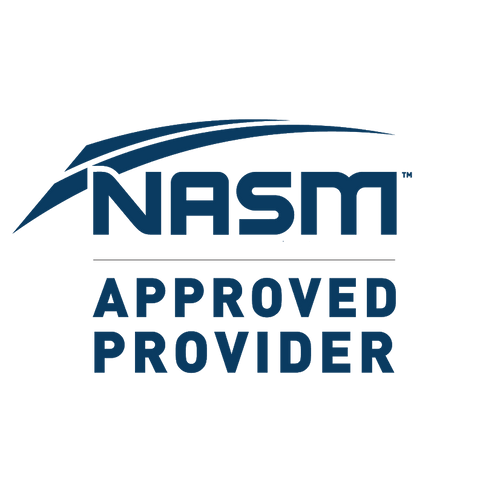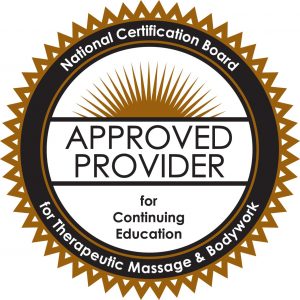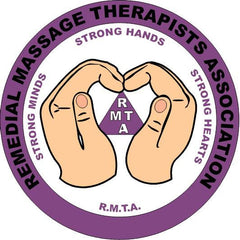Trigger Point Therapy - Nerve Entrapment Syndromes
Nerve Entrapment Syndromes - Stuart Hinds
Nerve Entrapment Syndromes
Nerve entrapments are not overly common but well worth exploring as trigger point therapy has been demonstrated to relieve symptoms.
In about half the cases of Cubital Tunnel Syndrome for example, studies have shown that clients will usually recover without the need for surgical intervention, and stress the importance of education to help clients avoid provocative movements such as protracted periods of elbow flexion.
In these cases, the clients rehabilitation can be greatly assisted with a program of trigger point therapy to help relieve the symptoms whilst the condition is slowly corrected over time.
In this blog we're going to take a brief look at the main nerve entrapment syndromes, their association with trigger points; and how and where trigger point therapy becomes relevant.
Anterior interosseous Nerve Syndrome (AINS)
Lesions of the anterior interosseous nerve in the forearm are rare and often misdiagnosed as tendon injuries. Wrist pain is the most common feature of AIN lesions regardless of the aetiology; this has been reported in 85% of patients.
Nerve lesions may be due to trauma, microtraumatic injuries or to "neuritis". The Anterior Interosseous Nerve (AIN) is an exclusively motor branch of the median nerve.
A complete lesion causes a characteristic deformity of pinch between the thumb and index finger (see "L" in the image below). AIN often resolves spontaneously, but trigger point therapy may be very beneficial in reducing the duration and intensity of symptoms.
Note: Areas of possible compression exist between the head of the Pronator Teres and the proximal tendon of Flexor Digitorum Superficialis.

Pronator Teres Syndrome (PTS)
Sometimes confused with Carpal Tunnel Syndrome (CTS) compression may occur at several locations along the nerve path including the ligament of Struthers, the Lacertus Fibrosus and also the Flexor Digitorum Superficialis.
PTS is a rare but interesting case study that is thought by many to be directly related to trigger points in the Pronator Teres in the forearm.
A typical case would be a 30 year old female client with pain in the volar area of the forearm (portion of the forearm that is on the same side as the palm) for 2 months duration, reporting a gradual onset with no history of injury.
Pain is typically worse on working with the arm and in supination, and occasional radiation of pain to the wrist.
The client will also often report weakness of some hand flexor muscles. Interestingly, this is often the first symptom to respond when we treat trigger points in the Pronator Teres.
Radial Nerve Myogenic Entrapment
Often confused with ‘tennis elbow’ other names include ‘Saturday night Palsy’ and ‘Honeymoon Palsy’. Pain from Radial Nerve Entrapment is mainly experienced along the dorsal forearm from the elbow down to the wrist.
Pain is easily provoked with a mechanical challenge, for example opening a door, holding a glass of water, or even shaking hands - all of which may become excruciating. Over the years we've been able to treat most clients very effectively to relieve pain symptoms.
The main muscle to check for trigger points is the Supinator.
Ulnar Nerve Myogenic Entrapment
The three most common entrapments of the Ulnar Nerve are:
-
Guvon canal syndrome
-
Ulnar collateral ligament syndrome
- Cubital Tunnel Syndrome (CTS)
CTS (see below) is the most common, and it is the most readily treated using trigger point intervention whilst the Guvon Canal and Ulnar Collateral ligament are very deep and difficult to palpate.
Cubital Tunnel Syndrome
Sometimes known as ‘funny bone’ syndrome there is nothing funny about a traumatized Ulnar nerve!
The Ulnar Nerve is one of the three key nerves supplying sensation and power to the arm, wrist and hand.
It is positioned in a slightly vulnerable position in the Cubital Fossa where it can become traumatised by common postural behaviour such as leaning the elbows on armrests or a desk for prolonged periods.

Any intense physical activity that adds pressure to the nerve can cause Cubital Tunnel Syndrome (it is also sometimes caused by an abnormal bone growth in the elbow region) as it is a condition that is caused by compression to the ulnar nerve often by connective tissue or bone, but sometimes functionally by trigger points.
Typically these form in the Flexor Carpi Radialis and Ulnaris muscles.
When a trigger point develops, the host muscle becomes shorter, thicker, and less efficient. Because muscles are made up of 75% water, and the fact that water does not compress well, they become functionally swollen, which often leads to a taut band that can have further pressure effects on local tissues.
In fact, any change in shoulder, wrist or elbow mechanics over time may manifests in areas of tight muscles where trigger points may develop.

There is a well established trigger point therapy protocol for treating Cubital Tunnel Syndrome (Palmaris Longus, Flexors).
Most therapists will tell you that the results come pretty quickly, especially when the client is willing to adhere to a daily regime of self-massage and stretching exercises between treatments.
As a footnote, we should point out that CTS is more than twice as common in men. This is thought to be due to the fact that women have a slightly different elbow anatomy.
In men the arms are straighter whereas women have a larger ‘carrying angle’ to avoid bumping their hands into their wider pelvis. Women also have a larger fat content on the inner elbow overlying the funny bone prominence (the ulnar coronoid process).
Stuart Hinds is one of Australia's leading soft tissue therapists who recently (June 2016) received a lifetime achievement award from the Australian Massage Therapy Association. Stuart is a lecturer at Victoria University, Melbourne, on Soft Tissue Techniques, and has been part of the Australian Olympic manual therapy team for over 20 years (Sydney 2000, Athens 2004, Beijing 2008, London 2012).
Links
Find a Trigger Point Professional in your area
Trigger Point Therapy - Where to Start?
Neuromuscular Stretching Technique
Dry Needling for Trigger Points
NAT Shoulder Master - Online CE Course
NAT Neck Pain - Online CE Course
Certify as a Trigger Point Therapist
About NAT Courses
As a manual therapist or exercise professional, there is only one way to expand your business - education!
Learning more skills increases the services that you offer and provides more opportunity for specialization.
Every NAT course is designed to build on what you already know, to empower you to treat more clients and grow your practice, with a minimal investment in time and money.
Help Desk
About Niel Asher Education
Niel Asher Education is a leading provider of distance learning and continued education courses.
Established in the United Kingdom in 1999, we provide course and distance learning material for therapists and other healthcare professionals in over 40 countries.
Our courses are accredited by over 90 professional associations and national accreditation institutions including the National Academy of Sports Medicine (NASM) and National Certification Board for Therapeutic Massage and Bodywork (NCBTMB). Full details of all international course accreditations can be found on our website.
Printed course materials and other products offered on our websites are despatched worldwide from our 3 locations in the UK (London), USA (Pennsylvania) and Australia (Melbourne).
More About Us
NAMTPT AWARD
We are honored to have received the "Excellence in Education" Award from the National Association of Myofascial Trigger Point Therapists.
Since 1999 Niel Asher Education has won numerous awards for education and in particular for education and services provided in the field of trigger point therapy.
Read Full Article
Award Winning Instructors
Niel Asher Healthcare course instructors have won a host of prestigious awards including 2 lifetime achievement honorees - Stuart Hinds, Lifetime Achievement Honoree, AAMT, 2015, and Dr. Jonathan Kuttner, MD, Lifetime Achievement Honoree, NAMTPT, 2014.
Meet the Instructors
Accreditation

If you are a qualified/licensed manual therapist or exercise/fitness professional you can expand your credentials with NAT certification.
In addition to national accreditation for continued education, each course that we offer includes "NAT Learning Credits". By taking and completing courses you can accumulate NAT credits to qualify for NAT certification.
There are currently 3 levels of NAT certification. Certifying NAT is a valuable way to show your clients that you take continued education seriously, and to promote your skills and qualifications.
Most of our courses are accredited for CE/CPD/CPE. A full list of CE accreditations can be found by clicking on the link below.
About NAT Certification
Niel Asher Technique
Since 1999 the Niel Asher Technique for treating trigger points has been adopted by over 100,000 therapists worldwide, and has been applied to the treatment of a number of common musculoskeletal injuries.
The Niel Asher Technique for treating frozen shoulder was first introduced and published in 1997 and has been widely adopted by therapists and exercise professionals working within elite sports and athletics.
Read More
International Students
Most of our courses are available as either "Printed" or 'Download" editions, wherever you live. Internet connection is required to access online and downloadable material.
When you purchase a download edition, you receive immediate lifetime access to all course material. Course texts can be downloaded and printed if required.
When you purchase a "Printed" edition, you will also receive free access to the download edition.
We ship Worldwide from locations in the USA, UK, and Australia. Most items are despatched within 24 hours and shipping is FREE for all orders over US$50.
Shipping
Where to Start?
We offer a range of over 50 courses, presented by some of the worlds leading manual therapists. All courses are reviewed annually, and new courses are regularly added.
Our courses are modular, and designed to build on what you already know. For more information, please visit our "Where to Start?" page.
Start Here




This trigger point therapy blog is intended to be used for information purposes only and is not intended to be used for medical diagnosis or treatment or to substitute for a medical diagnosis and/or treatment rendered or prescribed by a physician or competent healthcare professional. This information is designed as educational material, but should not be taken as a recommendation for treatment of any particular person or patient. Always consult your physician if you think you need treatment or if you feel unwell.
About Niel Asher Education
Niel Asher Education (NAT Global Campus) is a globally recognised provider of high-quality professional learning for hands-on health and movement practitioners. Through an extensive catalogue of expert-led online courses, NAT delivers continuing education for massage therapists, supporting both newly qualified and highly experienced professionals with practical, clinically relevant training designed for real-world practice.
Beyond massage therapy, Niel Asher Education offers comprehensive continuing education for physical therapists, continuing education for athletic trainers, continuing education for chiropractors, and continuing education for rehabilitation professionals working across a wide range of clinical, sports, and wellness environments. Courses span manual therapy, movement, rehabilitation, pain management, integrative therapies, and practitioner self-care, with content presented by respected educators and clinicians from around the world.
Known for its high production values and practitioner-focused approach, Niel Asher Education emphasises clarity, practical application, and professional integrity. Its online learning model allows practitioners to study at their own pace while earning recognised certificates and maintaining ongoing professional development requirements, making continuing education accessible regardless of location or schedule.
Through partnerships with leading educational platforms and organisations worldwide, Niel Asher Education continues to expand access to trusted, high-quality continuing education for massage therapists, continuing education for physical therapists, continuing education for athletic trainers, continuing education for chiropractors, and continuing education for rehabilitation professionals, supporting lifelong learning and professional excellence across the global therapy community.

Continuing Professional Education
Looking for Massage Therapy CEUs, PT and ATC continuing education, chiropractic CE, or advanced manual therapy training? Explore our evidence-based online courses designed for hands-on professionals.




















